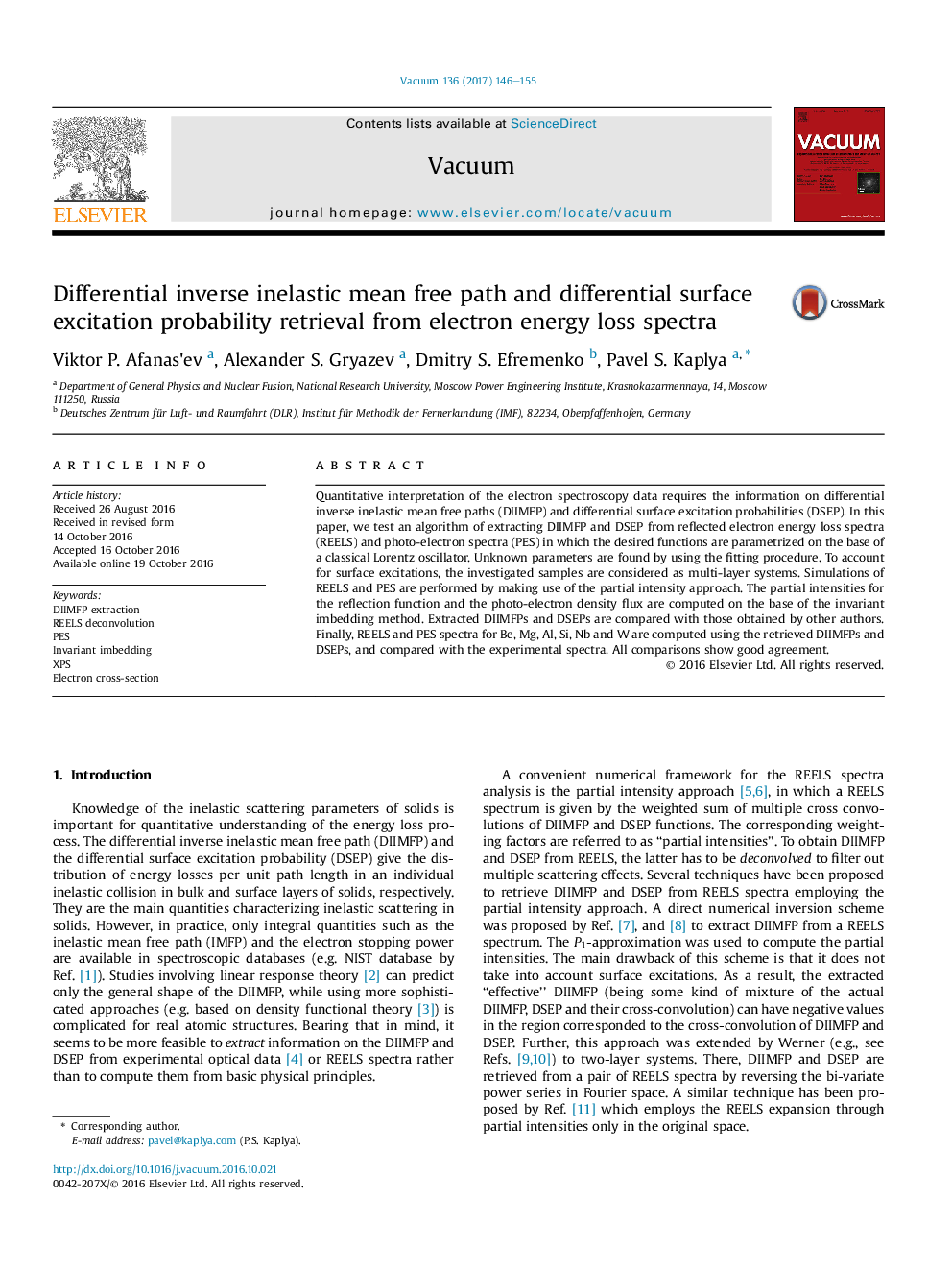| Article ID | Journal | Published Year | Pages | File Type |
|---|---|---|---|---|
| 5468448 | Vacuum | 2017 | 10 Pages |
â¢A new procedure for DIIMFP extraction involving linear response theory is proposed.â¢For partial intensity computations the invariant imbedding equations are used.â¢The same retrieval procedure is adopted for REELS and PES spectra.
Quantitative interpretation of the electron spectroscopy data requires the information on differential inverse inelastic mean free paths (DIIMFP) and differential surface excitation probabilities (DSEP). In this paper, we test an algorithm of extracting DIIMFP and DSEP from reflected electron energy loss spectra (REELS) and photo-electron spectra (PES) in which the desired functions are parametrized on the base of a classical Lorentz oscillator. Unknown parameters are found by using the fitting procedure. To account for surface excitations, the investigated samples are considered as multi-layer systems. Simulations of REELS and PES are performed by making use of the partial intensity approach. The partial intensities for the reflection function and the photo-electron density flux are computed on the base of the invariant imbedding method. Extracted DIIMFPs and DSEPs are compared with those obtained by other authors. Finally, REELS and PES spectra for Be, Mg, Al, Si, Nb and W are computed using the retrieved DIIMFPs and DSEPs, and compared with the experimental spectra. All comparisons show good agreement.
